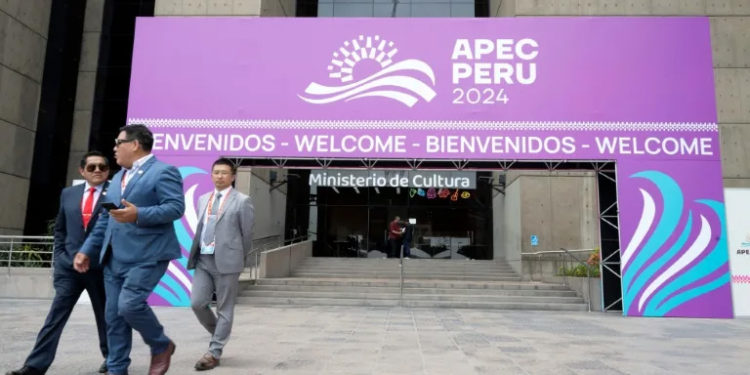AFP- The presidents of the United States, China and other Asia Pacific nations gather in Lima this week for an economic summit overshadowed by the prospect of a world embroiled in trade wars under Donald Trump.
It will be the last Asia-Pacific Economic Cooperation (APEC) summit for Joe Biden before he hands the presidency to Trump next year after a rout for the Democratic Party in November 5 presidential elections.
Trump’s “America First” agenda, with protectionist stances on global commerce, fossil fuel extraction and foreign conflicts, is threatening alliances Biden had built on issues ranging from the wars in Ukraine and the Middle East, to climate change and trade.
Biden will be in the Peruvian capital later this week with China’s Xi Jinping, who had called for the two countries to find ways to “get along” after Trump’s victory.
It is not known if the men will meet for private talks, nor has any envoy from Trump’s Republican Party been confirmed to attend the summit.
The president-elect has promised to slap huge new tariffs on Beijing in an attempt to balance bilateral trade, which he claims has left America holding the short end of the stick.
He also threatened tariffs of 25 percent or more on goods coming from Mexico unless it stops an “onslaught of criminals and drugs” crossing the border.
“Trump’s victory will definitely impact the APEC summit, given his rather protectionist narrative,” international relations professor Oscar Vidarte of the Catholic University of Peru told AFP.
“APEC is obviously weakened,” he added.
APEC, created in 1989 with a goal of regional trade liberalization, brings together 21 economies that jointly represent 62 percent of global GDP and over 40 percent of global commerce.
With the theme: “Empower. Include. Grow,” the 2024 summit program was to focus on trade and investment for inclusive growth, innovation, and sustainable growth for its members’ common good.
But uncertainty over Trump’s next moves now clouds the event’s agenda — as it does with the COP29 climate talks under way in Azerbaijan, and a G20 summit in Rio de Janeiro next week.
– ‘A tougher stance’ –
Biden had not removed all the tariffs imposed on China during Trump’s first term from 2017-2021.
But observers say the 47th president’s increasingly pugilistic narrative will drive the wedge between Washington and Beijing ever deeper.
“With respect to the two main issues on the agenda — migration and China — Trump will take a tougher stance… than Biden,” Michael Shifter, an expert at the Inter-American Dialogue, a think tank in Washington, told AFP.
“There is a risk, however, that pressuring governments in the Pacific Basin to pick sides between China and the US could be counterproductive, increasing China’s presence and influence in Latin America.”
While in Peru, Xi will inaugurate South America’s first Chinese-funded port, in Chancay, north of Lima.
Expected to serve as a major trade hub, the $3.5-billion complex is seen as symbolic of Beijing’s growing influence in South America, where it has built a vast array of railways, highways and other infrastructure.
China is an ally of Western pariahs Russia and North Korea, and is building up its own military capacity while ramping up pressure on Taiwan, which it claims as part of its territory.
But the world’s second-largest economy is grappling with a prolonged housing crisis and sluggish consumption that can only be made worse by Trump’s tariffs.
Economists say punitive tariffs will likely also harm the American economy and affect trade with neighbors Canada and Mexico — both APEC members — as well as Europe.
Starting Wednesday, Lima will receive government ministers and business leaders of APEC member countries, which also include Russia, Japan, South Korea, Indonesia, Chile and Australia.
Ministerial meetings will take place Thursday, followed by talks at the level of heads of state the following two days.
Russia’s Vladimir Putin is not attending the summit, for which Peru has deployed more than 13,000 soldiers in Lima.
Reports: AFP




















